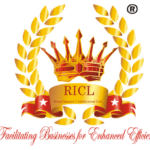
Safety Audit
A Safety Audit is a systematic evaluation of an organization’s safety management system, procedures, practices, and conditions to assess their compliance with safety regulations, identify potential hazards, and improve overall safety performance. Here are key aspects typically involved in a Safety Audit:
A Safety Audit is a systematic evaluation of an organization’s safety management system, procedures, practices, and conditions to assess their compliance with safety regulations, identify potential hazards, and improve overall safety performance. Here are key aspects typically involved in a Safety Audit:
Purpose: The primary purpose of a Safety Audit is to ensure that an organization’s safety practices align with regulatory requirements and industry best practices, aiming to prevent accidents, injuries, and occupational hazards.
Scope: Safety Audits can cover a wide range of areas including workplace facilities, equipment safety, employee training, emergency procedures, hazard communication, safety policies, and compliance with health and safety regulations.
Audit Team: The audit team may consist of internal safety professionals, external consultants, or a combination of both. They should have expertise in safety regulations, risk assessment, hazard identification, and safety management systems.
Audit Planning: Before conducting the audit, a detailed plan is developed outlining the audit objectives, scope, criteria for evaluation, audit methods, timelines, and responsibilities of audit team members.
Data Collection: The audit team collects data through various methods such as inspections, observations, document reviews, interviews with employees and management, incident reports, and analysis of safety records and procedures.
Compliance Check: The audit assesses the organization’s compliance with relevant safety regulations, standards (such as OSHA in the US or ISO 45001), industry guidelines, and internal safety policies.
Hazard Identification: The audit identifies potential hazards, unsafe conditions, and unsafe practices within the workplace. This includes physical hazards (e.g., machinery, chemicals), ergonomic hazards, biological hazards, psychosocial factors, and environmental hazards.
Risk Assessment: After identifying hazards, the audit evaluates the associated risks, their likelihood of occurrence, potential severity, and the effectiveness of existing controls in mitigating these risks.
Documentation Review: The audit team reviews safety documentation such as safety manuals, procedures, training records, safety data sheets (SDS), incident reports, corrective action plans, and emergency response plans.
Findings and Recommendations: Based on the audit findings, the audit team prepares a report detailing areas of non-compliance, deficiencies, corrective actions needed, best practices, and recommendations for improving safety performance.
Action Plan: The organization develops an action plan in response to audit findings, outlining specific steps, responsibilities, timelines, and resources required to address identified issues, implement corrective measures, and enhance safety controls.
Follow-Up and Monitoring: After implementing corrective actions, the organization conducts follow-up audits or inspections to verify compliance, monitor progress, track improvements, and ensure sustained safety performance over time.
Safety Audits play a crucial role in promoting a safety culture within organizations, protecting employees from workplace hazards, reducing accidents and injuries, avoiding regulatory penalties, enhancing productivity, and safeguarding the organization’s reputation.
[sp_easyaccordion id=”10750″]
[formsapp id=”662f63f6c4dd546c9916c3db”]
